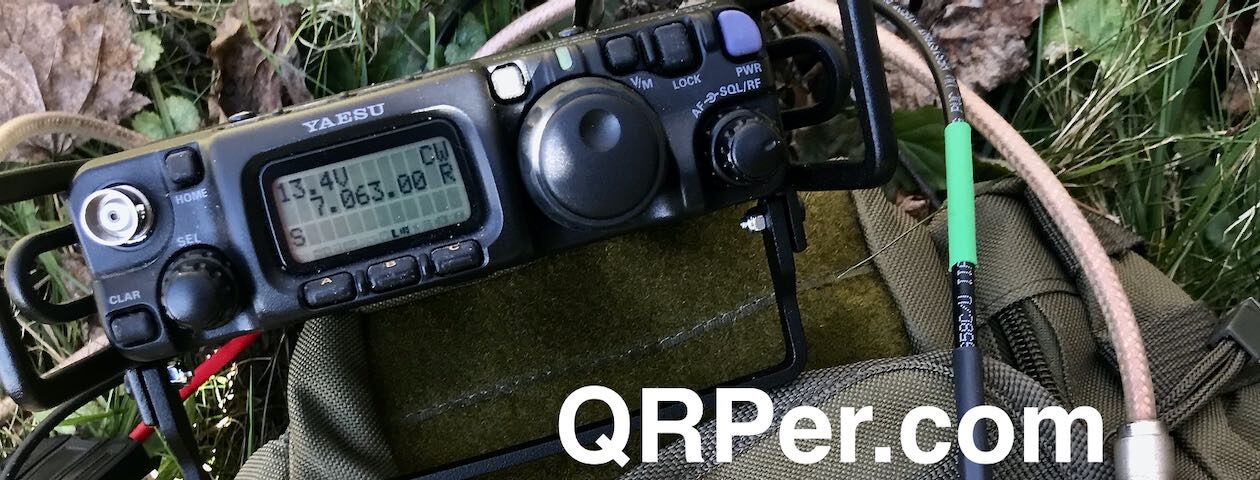On Tuesday, June 11, 2024, I took my production run Xiegu X6200 (on loan from Radioddity) to the Blue Ridge Parkway for its first POTA activation. The activation was a success, with good band conditions on 40 and 30 meters. You can read that field report by clicking here.
Later that day, I had a second opportunity to use the X6200. My daughters were kayaking near Lake Powhatan in Pisgah National Forest, so Hazel (my activational support animal–!) and I went for a quick POTA activation.
Pisgah National Forest (US-4510)
 I usually set up near the lake at Lake Powhatan, where there are picnic tables and shade. However, mobile phone reception is poor there. Since I planned to operate in single-sideband mode, I needed a way to self-spot or have a friend spot me, thus a little mobile phone reception (else, use my Garmin In-Reach).
I usually set up near the lake at Lake Powhatan, where there are picnic tables and shade. However, mobile phone reception is poor there. Since I planned to operate in single-sideband mode, I needed a way to self-spot or have a friend spot me, thus a little mobile phone reception (else, use my Garmin In-Reach).
 I decided to set up at a picnic area at the top of the hill near the main parking area for the lake/beach. I’ve never seen anyone use this site before, likely because it’s not close to the lake.
I decided to set up at a picnic area at the top of the hill near the main parking area for the lake/beach. I’ve never seen anyone use this site before, likely because it’s not close to the lake.

The site is surrounded by trees, making it a great spot to deploy a wire antenna.
Setting up
 I used my PackTenna 9:1 UNUN random wire antenna, which was already in my pack from the morning activation. It’s a good choice for the higher bands (20 and 17M) I planned to use.
I used my PackTenna 9:1 UNUN random wire antenna, which was already in my pack from the morning activation. It’s a good choice for the higher bands (20 and 17M) I planned to use.
I set up the PackTenna so it wouldn’t interfere with anyone walking through the site. Hazel found a sunny spot to relax.
Gear:
 Note: All Amazon, CW Morse, ABR, Chelegance, eBay, and Radioddity links are affiliate links that support QRPer.com at no cost to you.
Note: All Amazon, CW Morse, ABR, Chelegance, eBay, and Radioddity links are affiliate links that support QRPer.com at no cost to you.
- Xiegu X6200 via Radioddity (Save 5% off purchase amount when you shop with our affiliate link) and via Amazon.com
- Packtenna 9:1 UNUN Random Wire Antenna
- ABR Industries 25’ RG-316 cable assembly with three in-line ferrites (Use Coupon Code ABR10QRPER for 10% Discount!)
- Key cable: Cable Matters 2-Pack Gold-Plated Retractable Aux Cable – 2.5 Feet
- Begali Traveler
- GoRuck GR1 USA
- Weaver arborist throw line/weight and storage bag
- GraphGear 0.9mm 1000 Automatic Drafting Pencil
- Rite In The Rain Top Spiral Notebook
- Camera: DJI OSMO 4 action camera with Joby Telepod Sport Tripod
- DJI Wireless Microphones
On The Air
 I began by attaching the X6200 microphone and spotting myself on the SSB portion of the 20M band. I called CQ POTA for quite a while with no response.
I began by attaching the X6200 microphone and spotting myself on the SSB portion of the 20M band. I called CQ POTA for quite a while with no response.
 Once again, propagation conditions were poor. Continue reading Xiegu X6200: Second POTA activation with rough propagation, but CW saves the day!
Once again, propagation conditions were poor. Continue reading Xiegu X6200: Second POTA activation with rough propagation, but CW saves the day!






































































































